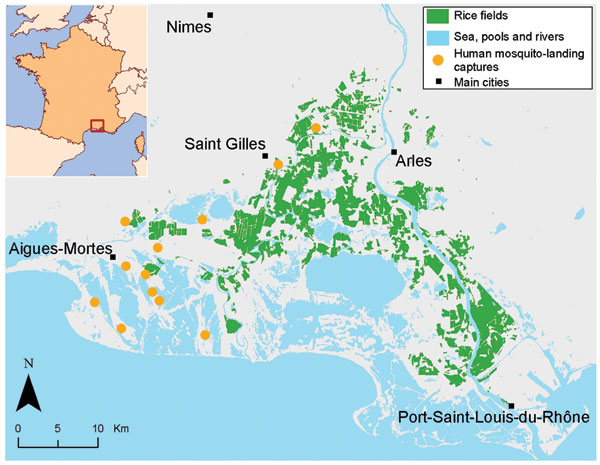Volume 13, Number 12—December 2007
Perspective
Effects of Local Anthropogenic Changes on Potential Malaria Vector Anopheles hyrcanus and West Nile Virus Vector Culex modestus, Camargue, France
Figure 1

Figure 1. Map of the Camargue, France, indicating areas of rice cultivation as well as mosquito sampling sites, 2001.
Page created: July 06, 2010
Page updated: July 06, 2010
Page reviewed: July 06, 2010
The conclusions, findings, and opinions expressed by authors contributing to this journal do not necessarily reflect the official position of the U.S. Department of Health and Human Services, the Public Health Service, the Centers for Disease Control and Prevention, or the authors' affiliated institutions. Use of trade names is for identification only and does not imply endorsement by any of the groups named above.